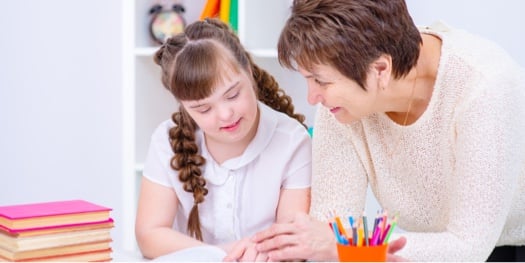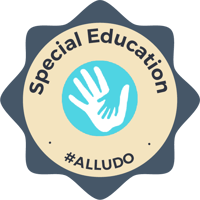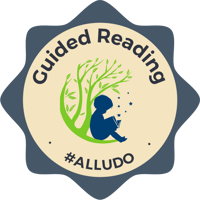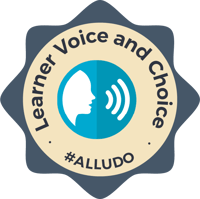Quick Tip Wednesday: How to Set Up a Gratitude Month
Welcome back to Quick Tip Wednesday!
7 min read
Damon Torgerson : Jul 1, 2022 11:00:00 AM

“If a child can’t learn the way we teach, maybe we should teach the way they learn.” ~ Ignacio Estrada
Every student deserves a chance to learn and one of the most meaningful things to happen in education is the recognition by administrators, teachers, and parents that not every student learns in the same way. When a student has challenges that get in the way of learning, it’s the job of school districts to remove obstacles and provide that student with what they need.
At Alludo, we understand that exceptional learners need exceptional education. With that in mind, here’s what you need to know about special education and inclusive education and six steps to help you develop a special education curriculum plan.
Before we reveal the steps needed to create a special education curriculum plan, let’s define what special education is. According to the United States Department of Education, special education is defined like this”
Special education means specially designed instruction, at no cost to the parents, to meet the unique needs of a child with a disability, including:
(i) Instruction conducted in the classroom, in the home, in hospitals and institutions, and in other settings; and
(ii) Instruction in physical education.
The definition goes on to say that special education includes speech-language pathology services, or any other related service if it is considered special education under State standards, including travel training and vocational education.
It’s important to note that while special education can cover a broad range of instruction and services, there is no one-size-fits-all definition because each child is unique.
Any special education curriculum should be tailored to meet the needs of individual students using information related to their capabilities. The US Department of Education says that kids should learn in the least restrictive environment or LRE. In most cases, that means placing kids who require special education in the same classrooms as their peers, but some children may require a different approach.
Students who qualify for special education services must have an Individualized Education Program or IEP. The IEP lays out the individualized teaching and resources that the student requires to learn and is provided at no cost to families. Kids with IEPs work with specialists to help them address their challenges and embrace their strengths, and family members play a key role in deciding what each child requires to thrive in the classroom.
Another term you may have heard when discussing students with disabilities is inclusive education, so let’s define it.
/AL_10-Blog01-2.jpeg?width=450&name=AL_10-Blog01-2.jpeg)
Inclusive education is education that emphasizes general education for all students. It places students with disabilities (SWDs) in age-appropriate classrooms with their peers (non-SWDs), taking the approach that students with disabilities are just as capable as other students and can learn best in a traditional classroom with their peers.
There have been numerous studies that reveal educational benefits for both SWDs and non-SWDs when they learn in an inclusive classroom. SWDs have realized gains in literacy, math, and social studies. Non-SWDs have also experienced gains in reading and math. One theory is that inclusive learning inspires teachers to try new instructional techniques and strategies, including peer review and support for non-SWDs.
The primary difference between special education and inclusive education is that inclusive education puts all students in the same classroom, with exceptions only for occupational or speech therapy. Both should be differentiated from integrated education, which takes place in the same classroom and may employ both general education and special education teachers.
Beyond test scores, learning in an inclusive classroom can boost the self-esteem of SWDs, giving them more confidence that they can learn and providing them with social opportunities that might not be available if they were learning in a separate special education classroom. Where special education takes a student-centric approach, inclusive education takes an “education for all” approach.
Special education curriculum adaptation involves taking a general education curriculum and changing it to be suitable for students with disabilities. Said another way, the same material can be studied but curriculum adaptation doesn’t expect students with disabilities to achieve the same learning outcomes as other students. Any curriculum adaptation should be noted in the student’s IEP.
There are eight ways that teachers can adapt curricula to suit students with disabilities:
/AL_10-Blog01-4.jpeg?width=450&name=AL_10-Blog01-4.jpeg)
Keep in mind that not all of these adaptations will be necessary for every student.
Any educator who teaches students with disabilities faces challenges. Here are four of the most common.
Activities in any inclusive classroom must be designed to include every student. Teachers must therefore take care to address issues that may discourage participation or communication among students. At the same time, they must seek out and incorporate adaptive equipment and communication tools for students with IEPs to use.
IEPs are, as their name suggests, individualized. Since every IEP is unique, teachers in inclusive classrooms must learn how to balance multiple IEPs for students who have them with the needs of the class as a whole.
Planning day-to-day activities in an inclusive classroom can be a challenge when students who have disabilities may need to be out of the classroom to attend therapy sessions. Since sessions may happen at different times of day, scheduling activities requires attention to detail and flexibility.
One of the biggest challenges for teachers in inclusive classrooms is a lack of resources, specifically a shortage of special needs educators and teacher aides. Any district that wishes to adapt curricula for special needs students must take care to provide teachers with the resources and assistance they require to accommodate all students in the classroom.
/AL_10-Blog01-3.jpeg?width=450&name=AL_10-Blog01-3.jpeg)
Now, let’s review the six steps required to develop a special education plan.
Because a special education curriculum must accommodate IEPs and the needs of individual students, the most important thing you can do is to remain open and flexible, understanding that your plans may need to be adjusted as you go.
Alludo specializes in providing teachers with dynamic professional learning that helps them better connect with their students. That includes special education, which is why we have included many special education topics and activities in the Alludo content catalog. The lessons we have curated can help teachers understand the goal of special education, different learning capabilities, and how to incorporate adaptive tools and technologies in the classroom.
 |
 |
 |
We’re here to support school districts, administrators, and educators. We believe that any district that wants to do a good job of accommodating students with disabilities can benefit from arming their teachers to create effective special education curricula. It’s an opportunity to encourage teachers to use their professional experience to meet the needs of students while saving them time and stress in the classroom.
We also believe that any educator who has students with IEPs in their classroom can benefit from open communication and collaboration with other teachers. Our Alludo Message Boards are designed to encourage collaboration and can be beneficial for both teachers and students
School districts can provide the best and most inclusive education for students with disabilities by empowering teachers to put their experience and passion to work developing special education curriculum plans. To do so, it’s essential to equip teachers with the knowledge and resources they need to meet students where they are.
Experience personalized learning for all levels of educators with a free trial of Alludo’s professional development platform. You’ll enjoy:
.png)
Welcome back to Quick Tip Wednesday!

Mid-Year Reflection: Your Secret to a Stronger Second Semester
A great way to get your learners engaged in your Alludo program is by keeping the content in your program up-to-date and relevant. Rebecca has...